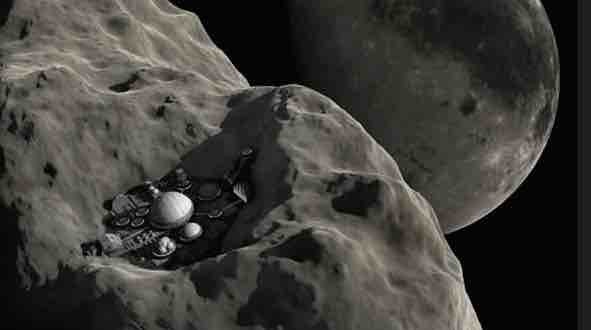Asteroid mining is closer to reality now than ever before as NASA gives contracts to two companies in the field to work upon.
Deep Space Industries and Planetary Resources are among the most joyous companies at the moment. They have got lucrative contracts from none other than NASA regarding space directions and they claim that this is going to help them in their long-term endeavour of asteroid mining.
Both companies have been forging plans to launch asteroid-landing probes for months-long stints on near Earth objects — with the aim of extracting valuable resources. Although such expeditions could theoretically return to Earth with valuable minerals, the financial viability of the concept relies on the prospects of supplying other space missions with an extracted assets. That’s where NASA comes in.
With a spate of deep space missions planned in the coming century, NASA would be able to save time and money by supplying some of those missions (including International Space Station expeditions) with vital resources mined from asteroids — water, silicate, carbonaceous minerals and more.
“Deep Space brings commercial insight to NASA’s asteroid planning, because our business is based on supplying what commercial customers in Earth orbit need to operate, as well as serving NASA’s needs for its moon and Mars exploration,” Deep Space CEO Daniel Faber said in a press release earlier this year. “The fuel, water, and metals that we will harvest and process will be sold into both markets, making available industrial quantities of material for expanding space applications and services.”
The fuel it takes to rocket out of the grasp of Earth’s gravity makes launching anything — much less a massive cargo ship — exceptionally expensive. By contrast, asteroids have minuscule centers of gravity, making coming and going from them much less fuel (and cost) intensive.
“Right now it costs $17 million per ton to get anything up to geosynchronous orbit,” David Gump, vice chairman of Deep Space, told The Boston Globe. “If we can beat whatever that price is in 2022, we’ll have a big market.”
“Asteroids hold the resources necessary to enable a sustainable, even indefinite presence in space — for science, commerce and continued prosperity here on Earth,” Chris Lewicki, president and chief engineer of Planetary Resources, echoed in a statement released by NASA last week.
As part of Planetary Resources’ ongoing cooperation with NASA’s asteroid exploration efforts, the company will help sort through the near Earth object-finding algorithms being submitted by citizen scientists as part of the agency’s Asteroid Data Hunter challenge.
“By harnessing the public’s interest in space and asteroid detection, we can more quickly identify the potential threats, as well as the opportunities,” Lewicki added.
Agencies/Canadajournal
 Canada Journal – News of the World Articles and videos to bring you the biggest Canadian news stories from across the country every day
Canada Journal – News of the World Articles and videos to bring you the biggest Canadian news stories from across the country every day



